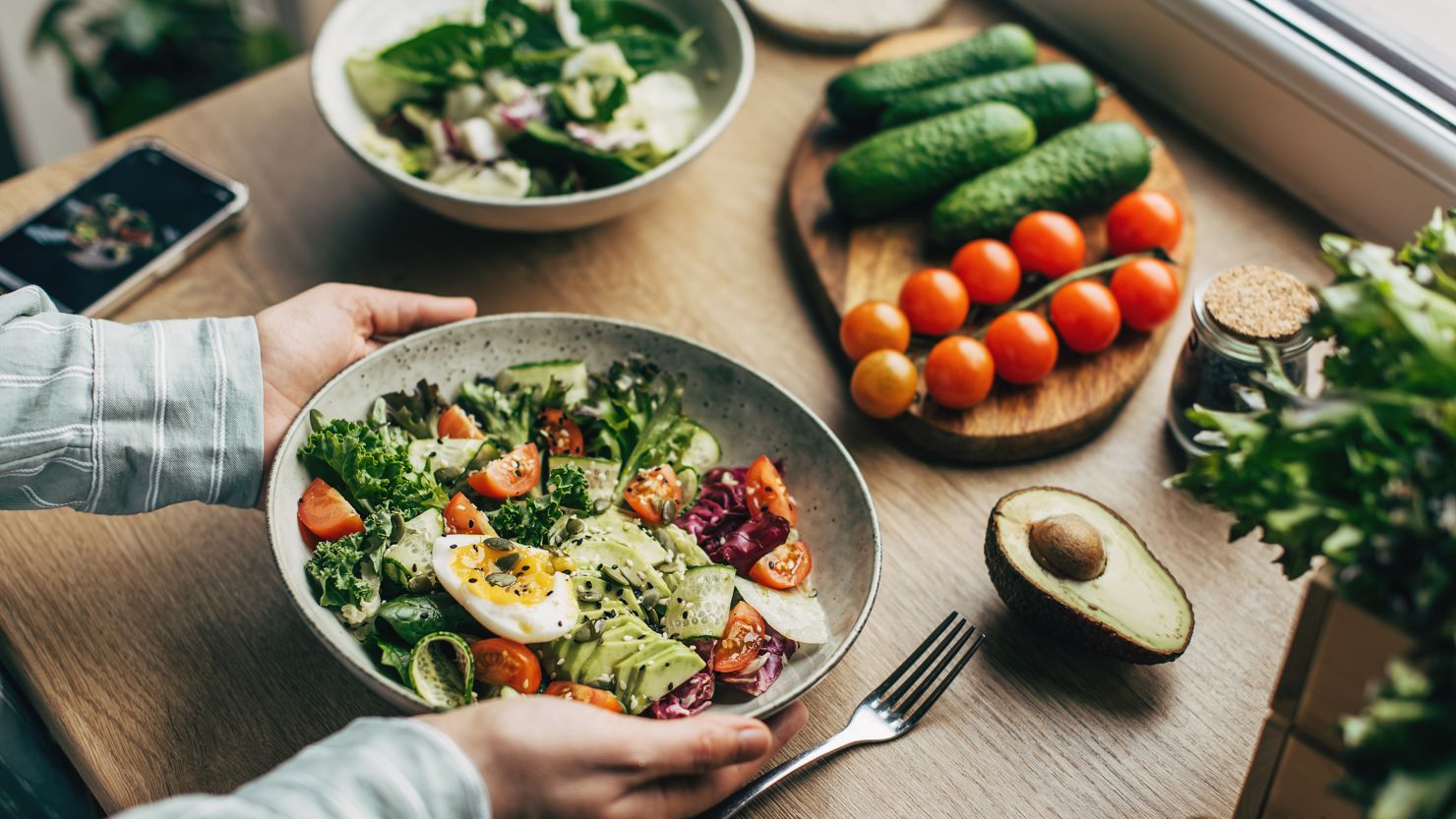There are plenty of reasons why many health professionals don’t want you on a restrictive diet.
Restrictive diets are a way of eating that reduces calories to below someone’s energy needs and/or limits the macronutrients or food groups a person eats, said Jennifer Rollin, founder of The Eating Disorder Center in Rockville, Maryland.
Such diets aren’t sustainable, Rollin said. You might not get your calorie or nutrient needs, or they might encourage bingeing behaviors and could lead to unhealthy relationships with food and your body, she said.
But how do you know when a diet is restrictive or when you are just making choices with health or longevity in mind?
There are good rules of thumb. If you find that you base your choices on hopes of losing weight or if your diet excludes whole food groups, you are likely on a restrictive diet, said Natalie Mokari, a dietitian based in Charlotte, North Carolina.
In those cases that aren’t as clear-cut, here are three questions to ask yourself about your diet, Rollin and Mokari said.
How often are you thinking about food?
One way to evaluate your diet is to look at how much you are thinking about food.
With a health-conscious lifestyle, you might be able to eat what your body needs and move forward. But when under a restrictive diet, people tend to obsess over what they ate, what they will eat and the shame they feel after they have eaten, Mokari said.
Restriction can make social gatherings less fun and meals less satisfying, and figuring out how to eat can become a full-time job.
“It starts to be kind of overconsuming for somebody in their day-to-day lives, and it inhibits their enjoyment,” she said. “It can create lots of obsessive behaviors. … Food is not meant to be thought about in that way.”
How rigid are you?
Another good gauge is your flexibility around the style of eating you are following, Rollin said.
“There’s a difference between a preference for eating or a way of eating that makes somebody feel good versus a set of rigid rules that have to be followed,” she said, adding that those mandates often come with guilt and shame.
There are certain health conditions in which a food needs to be cut out entirely, but otherwise you can give yourself permission to approach the food in question in a more balanced way, Rollin asked.
For example, if you are trying to limit cheese — are you saying that you will never have cheese again, or can you be comfortable adding fruits, vegetables and nuts to the charcuterie board alongside the cheese, so you are eating less of it?
“Instead of looking at what you can cut out,” Rollin said, “look at what you can add in.”
Can you have just a little bit?
With her clients, Mokari likes to use the 80/20 rule — 80% of the time they focus on eating all the foods needed for a particular diet or health concern, and 20% of the time there is more leniency, she said.
And doing so isn’t just to leave room for fun. This approach also helps veer away from a restrictive mindset.
“If you put all these rules around certain foods, you’re going to feel like feast or famine on that food,” she said.
Feeling as if you can’t control yourself around particular foods might be a sign that you are being too restrictive in your diet, Rollin said. And that can be physically restrictive by not allowing yourself to eat the food or mentally restrictive by shaming yourself while eating it and afterward, she said.
The drive to eat foods that aren’t always available is evolutionary, Rollin said. Human bodies are primed for times of famine to consume as much as possible when we encounter our next food source, she said.
Moving away from restriction
If you want to make decisions around food with health in mind but want to cut out the restriction, Rollin and Mokari recommend working with health professionals to tease out exactly what doing so means.
Some people, both on and offline, claim they have the secret diet for treating health conditions, so it is important to work with your doctor, a dietitian and/or an eating disorder therapist to determine what is healthy for you and what is part of diet culture, Rollin said.
It may also be helpful to consult doctors who are neutral about weight or use a Health at Every Size approach, Mokari added. This kind of medicine looks at health as a whole and doesn’t focus on size or body mass index as a primary measure of a person’s well-being, according to the Association for Size Diversity and Health.
And if you are in a place of restrictive dieting in which it’s hard to stop yourself once you’ve started to eat a particular food you have deemed unhealthy, the answer may be to give yourself permission, Rollin said.
“Early in the pandemic, when toilet paper was limited, what did everyone do? They ran out and ordered toilet paper, right?” she said.
The goal is to remove the mystique of demonized foods so you can make choices based on what your body needs rather than what your brain is scared it won’t be able to get again.
Nevertheless, there are health conditions such as allergies in which foods do have to be cut out entirely. Be sure to follow your doctor’s advice in those cases, Rollin said.






